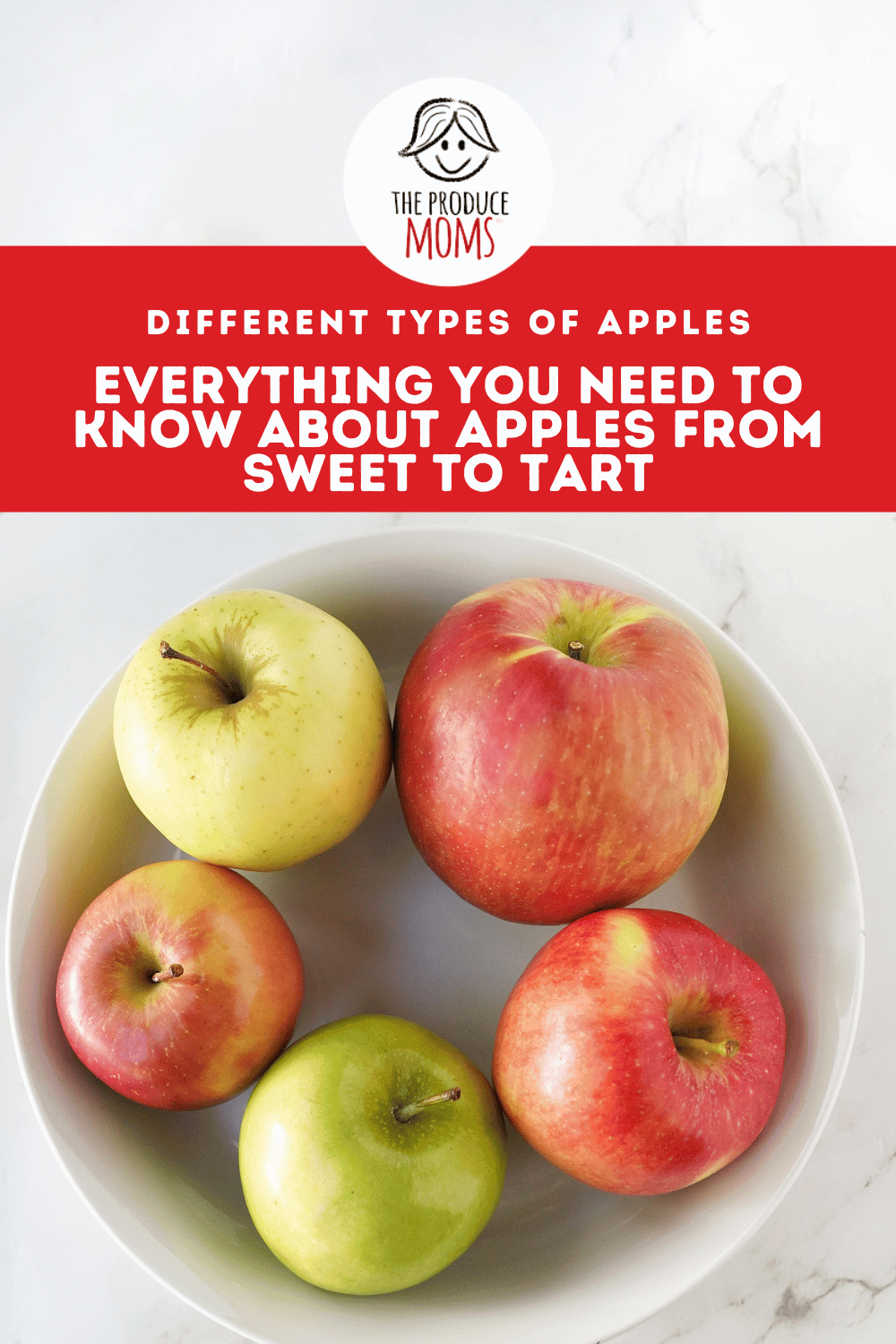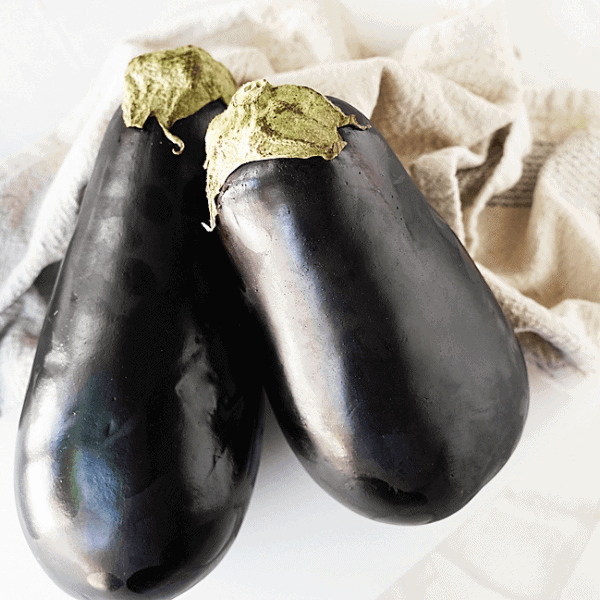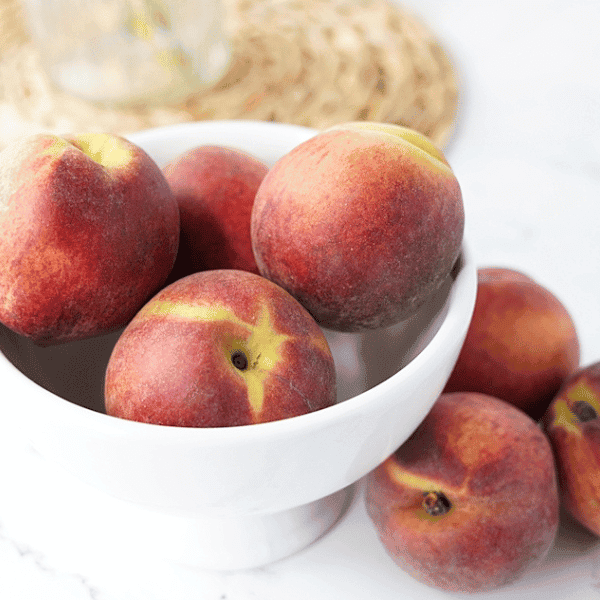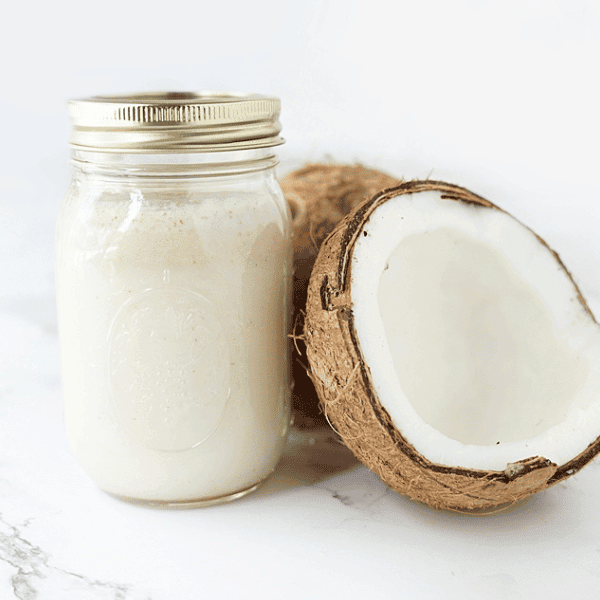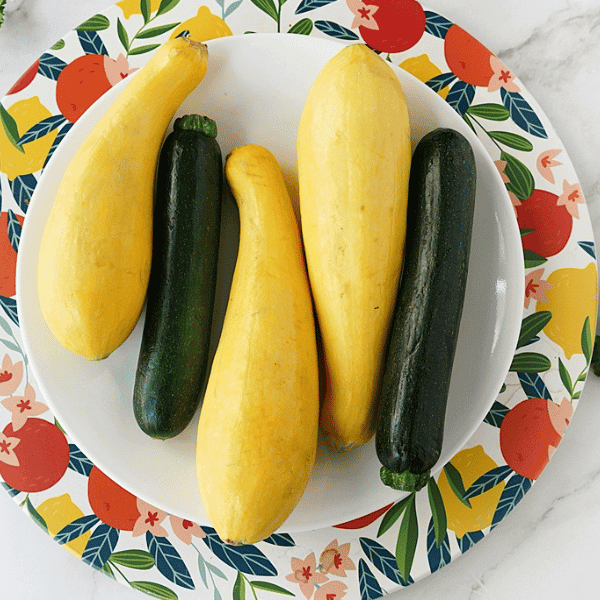Different Types of Apples—Everything You Need To Know About Apples From Sweet to Tart
Oct 02, 2024, Updated Oct 11, 2024

This post may contain affiliate links. Please read our disclosure policy.
Did you know that there are thousands of different types of apples? Yep, you read that right!
Although your local grocery store probably isn’t overflowing in the apple department, they often carry many types of apples for you to choose from.
Here at The Produce Moms, we know choosing the perfect one can be confusing—especially when they all look so good. Each beautiful fruit is unique in flavor and color, and depending on what you’re using it for, you need to know which one to select.
This is your guide to 11 of the most accessible apple varieties. We’ll explain the flavor profile and the best ways to use these types of apples at home. We’ve even included some of our favorite apple recipes throughout the blog.
Let’s dig in!
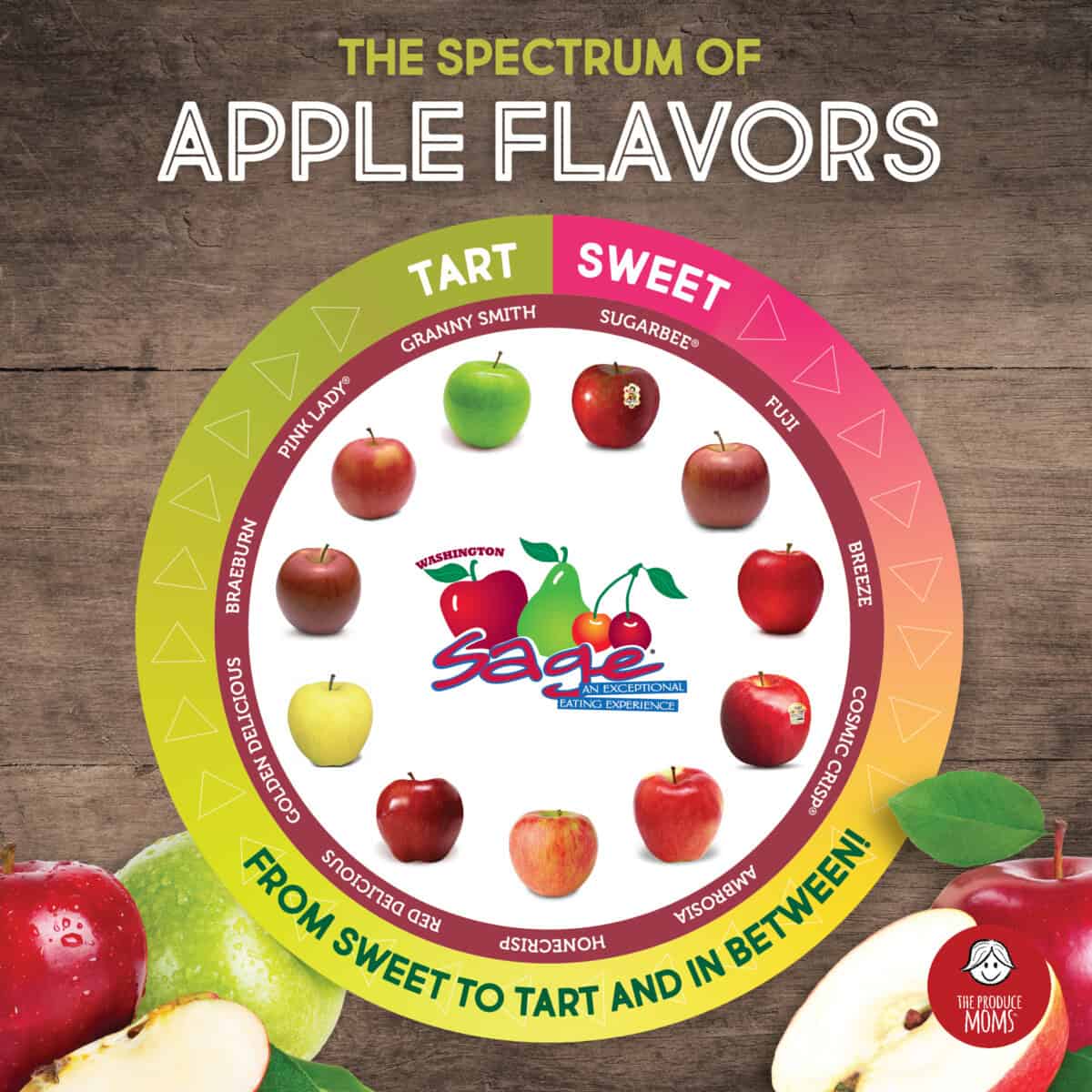
This post is sponsored by Sage Fruit.
SugarBee®
Flavor: crispy-firm texture and sugar-sweet
Uses: snacking, baking
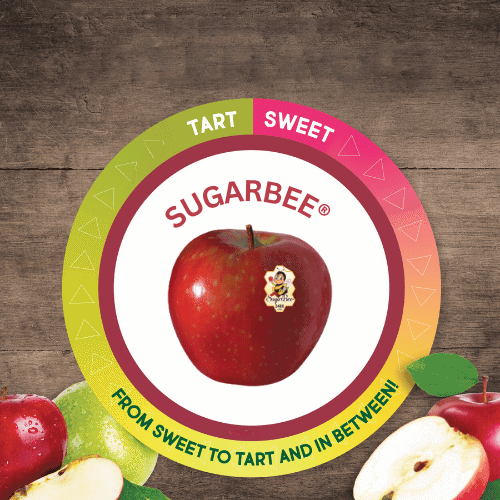
These apples came about by accident, but we’re so glad they did! Did you know that to become sweet and juicy, apples actually need pollination from different types of apples?
One day, a honeybee transferred pollen from an unknown apple variety onto a honeycrisp apple blossom – Mother Nature did her part and the result is the sweet, crisp, naturally created-by-bees: SugarBee apple. (fitting name, right?). Their juicy, sweet flavor makes them perfect for eating raw on salads or by themselves.
Look for the large, round, bright red and yellow colored apples with the unique honeycomb PLU sticker.
Related: Chocolate and Caramel Apple Bites
Fuji
Flavor: super sweet and extremely juicy
Uses: snacks, salads, baking, drinks, sauces, freezing

Named after Mount Fuji, these apples originated in Japan in the late 1930s. They’re a cross between a tart-sweet Ralls Janet apple and a sweet Red Delicious. It’s no wonder that the Fuji is naturally sweet and super juicy.
Fujis are versatile and can be used in many types of recipes. If you’re not sure which type of apple to use, you can’t go wrong with a Fuji.
Available all year, they are the red apples with a yellow stripe that is typically on the side of the apple.
Related: Pear and Apple Nachos
Breeze
Flavor: sweet and very crisp
Uses: snacks, salad, cooking, baking, drinks

These beauties originated in New Zealand, but are now also grown in the United States, and are available for a limited time—from August to January.
The Breeze has a solid pink-red blush over a yellow background. It is aromatic and sweet with a very crisp, dense white flesh. It’s a refreshing, tasty snack for both kids and adults alike.
We always make sure to stock up because they’re so crisp and refreshing. Perfect for spring and early summer recipes.
Related: Apple Martini
Cosmic Crisp®
Flavor: sweet and tart
Uses: snacks, baking, cooking, juicing
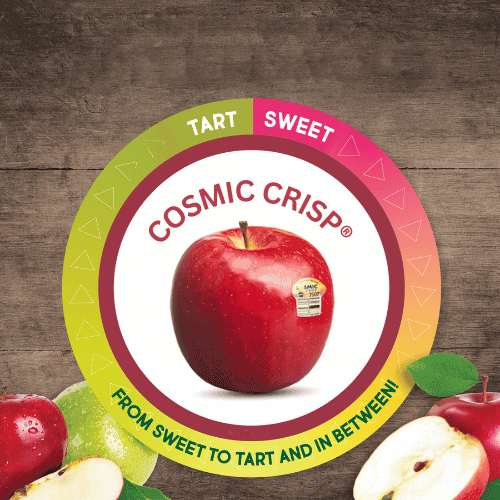
A cross between the sweet-tart Enterprise and juicy Honeycrisp apples, Cosmic Crisp® apples have the perfect balance of sweet and tart in every bite. We love to use these bright red apples for raw snacks because they stay fresh longer than most apple varieties.
Bakers also love these because they keep their bright red color and crisp texture while they cook. They’re available almost all year whether you are baking an apple pie in the fall or in the mood for a sweet summer treat.
Related: Apple Breakfast Hash
Ambrosia
Flavor: a hint of honey
Uses: snacks, salads, baking, drinks, pies, sauces, freezing
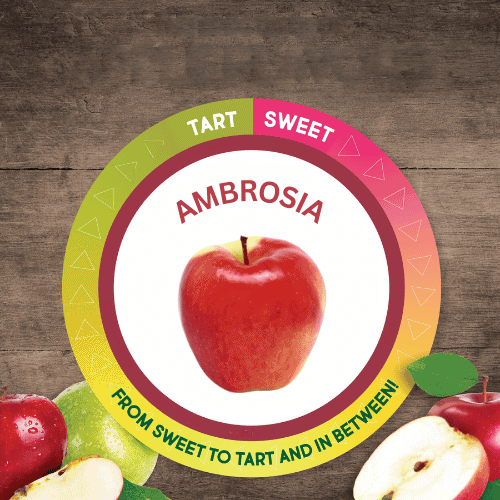
The Ambrosia apples came about from a chance seedling. It’s believed to be a cross between a honey-rich Starking Delicious and a mild Golden Delicious apple—two varieties in the orchard when the Ambrosia was discovered.
Ambrosia apples are lower in acidity, making them easier for kids and older loved ones to digest. Look for the fluorescent pink blush color with yellow seeping through and a slight cone shape at the top.
Related: Apple And Cottage Cheese Breakfast Bowl
Honeycrisp
Flavor: subtly tart, juicy-sweet
Uses: snacks, salads, baking, drinks, pies, sauces

These apples were created at the University of Michigan in the late 1970s, but weren’t introduced to families until 20 years later. However, they are now one of the most sought after apples in the produce department.
A cross between a sweet-tart Macoun and a sweet Honeygold, these apples have a more complex flavor with a subtle tartness that’s still juicy and sweet. You can easily spot a Honeycrisp from the small yellow or rosy spots over the mostly red skin.
Related: Sheet Pan Apple Pancakes
Red Delicious
Flavor: crisp, sweet, and juicy
Uses: snacks, salads
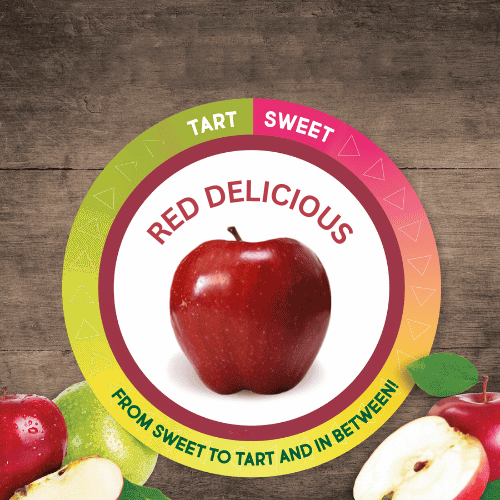
Red Delicious apples are one of the easiest apples to spot in the produce aisle. They’ve been around for about 140 years and have the classic heart shape that you think of when you want an apple—the symbol of the heart-healthy American apple.
Red Delicious apples range in size from medium to large with a deep red color. Our favorite way to eat these is fresh off the shelf.
Related: Apple, Ham, and Cheese Breadless Sandwiches
Golden Delicious
Flavor: mild, sweet, well-balanced
Uses: snacks, salads, baking, drinks, pies, sauces, freezing

The Golden Delicious is our favorite apple for baking. It has a thin golden, yellow skin that often doesn’t need to be peeled. The flesh stays fresh and firm during baking so it holds its shape against the heat in the oven.
The balance of mild, not overpowering sweetness makes it one of our go-to apples for a variety of recipes. Look for the yellow apples (sometimes they have a pink hue) next time you’re baking a pie, crisp, or dessert.
Related: Apple Crisp Bars
Braeburn
Flavor: crisp, juicy, spicy-sweet
Uses: snacks, salads, baking, sauces, pies

Originating in New Zealand, Braeburn apples are now grown right in the United States. These types of apples have the sweet-tart flavor of a Lady Hamilton with the pear flavor of a Granny Smith. Their unique spicy-sweet taste is perfect for adding to salads or eating raw as a snack.
Braeburn apples can be slightly different in color—from orange to red, with small yellow spots poking through.
Related: Apple Salsa
Pink Lady®
Flavor: tangy, tart, and sweet
Uses: Snacks, salads, baking, drinks, pies, sauces, freezing

Pink Lady® apples are the last apples harvested in Washington during October, although they’re available all year. The crisp fall weather in the Pacific Northwest brings out the bright, namesake coloring specific to this type of apple.
The flesh is firm with a tangy, tart, and sweet flavor. We love using these in baking and our favorite drinks.
Related: Pink Lady® Mimosas
Granny Smith
Flavor: tart, well-balanced
Uses: snacks, salads, baking, drinks, pies, sauces, and freezing

Discovered in Australia by “Grannie” Anne Smith in New South Whales, Granny Smith apples have a distinct vibrant green skin. They can be medium to large and are known for their tart flavor.
Granny Smith apples are our go-to baking apples because the sugar in baking recipes balances out the tartness. They are also really tasty when sauteed to bring out their natural flavor.
Related: Bacon Wrapped Apples
As you can see, we’re a little apple crazy. Any way you slice it, apples can be baked, sauteed, or eaten fresh with fun toppings. They are super versatile and work with a range of flavor profiles in many recipes. With so many delicious ways to enjoy apples, it’s important to choose the high quality fruit, that’s where Sage Fruit comes in!
Why We Love Sage Fruit
Sage Fruit works with their growers to produce and distribute a wide variety of apples to you and your family. They view growing apples as an art. As they continue to learn new growing methods, their apples always yield the highest quality.
See an apple variety that you haven’t tried yet? Grab it the next time you’re in the produce aisle and give it a taste!
